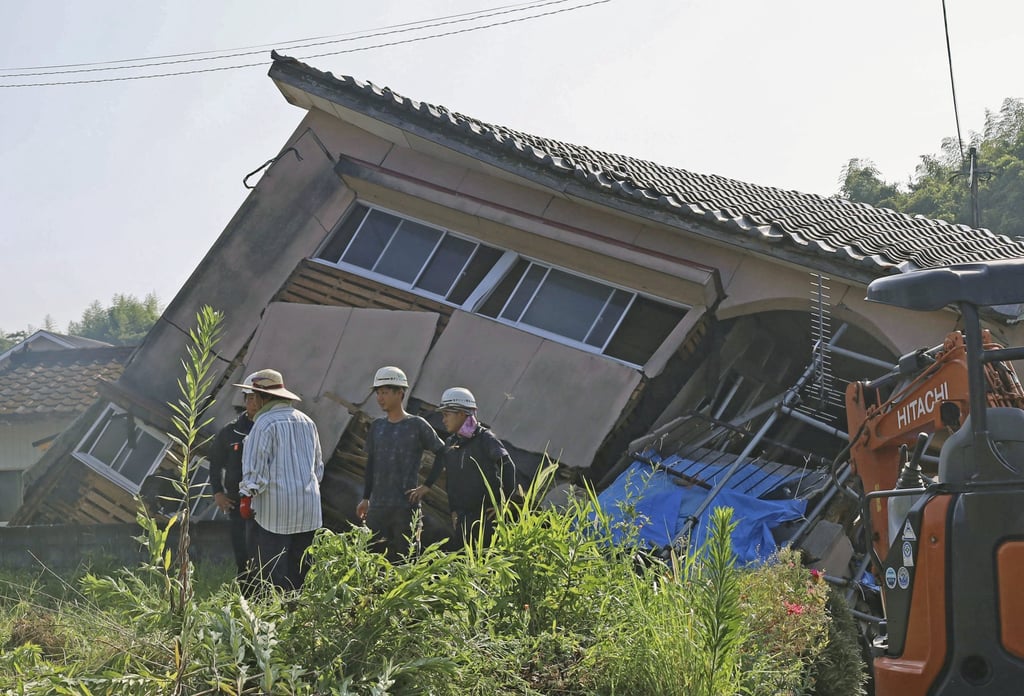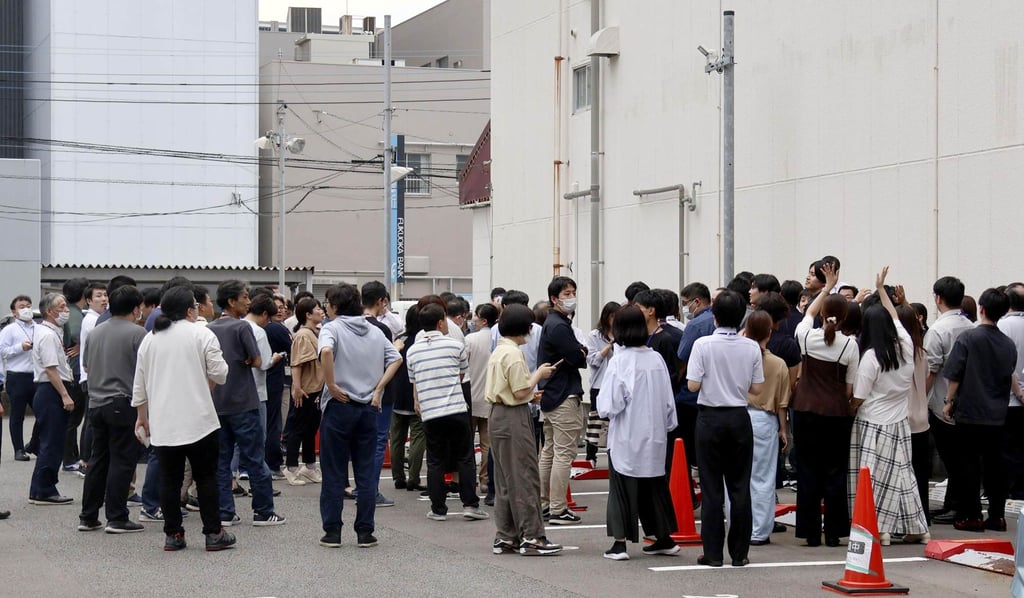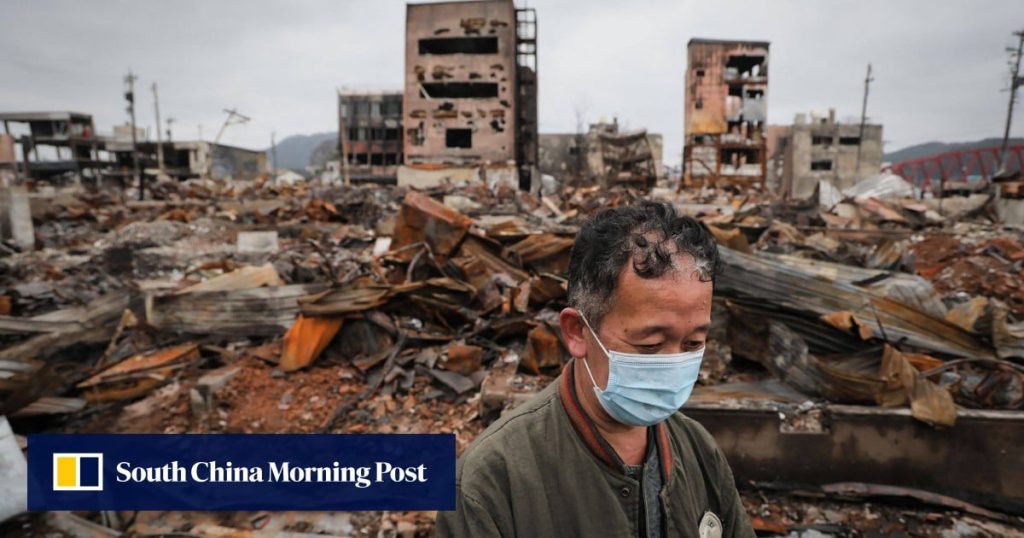“I don't think enough information and advice is available in other languages for foreign visitors,” said Masaru Takayama, president of Kyoto-based Spirit of Japan Travel.
“At present, maps of earthquake, tsunami, landslide and other hazards are only available in Japanese in most cities because they were designed for residents, not tourists,” he told This Week in Asia.
As a result, foreign nationals who do not speak or read Japanese will not understand what to do in the event of a major natural disaster, what evacuation routes they should follow or where they can get medical treatment or find shelter, Takayama said.
“There is a complete lack of information and national and local governments need to fill it because it directly affects the entire tourism industry,” he said.

Takayama chaired a meeting Tuesday called specifically to strengthen disaster management protocols, including confirming the location of his company's staff and travelers, ensuring their well-being and, if necessary, supervising their evacuation and any medical treatment they may need.
The Japan National Tourism Organization runs Japan Safe Travel, an online platform that regularly provides information on natural disasters and safety tips to visitors via social media. The information is also expected to be made available in print at various locations across Japan to help foreign tourists, Takayama said.
“I realize this is extra work for local governments and they are often under-resourced, but it is something they need to start providing,” he said, adding that he was confident that lingering concerns about the possibility of a major disaster would spur local authorities to action.
“It may take a little longer in inland areas and mountains, which will be less affected by a tsunami, but it is very important that it starts happening in coastal areas and big cities that would be most affected by a disaster,” he added.
Concerns about seismic activity appear to be deterring foreign travelers from visiting Japan. The Korea JoongAng Daily reports an increase in travel cancellations to some Japanese destinations. Similarly, Chinese tourists appear to be avoiding Japan for their summer vacations. The Global Times reports that more travelers are canceling hotel reservations and flights to the country.
In June, about 70,000 South Koreans visited Japan, while foreign arrivals reached a record 3.13 million.

Ashley Harvey, a tourism marketing analyst who has worked in Japan's tourism industry for more than 15 years, said businesses should have emergency action plans to deal with earthquakes and practice them regularly. National and local governments should also provide useful guidance in multiple foreign languages, including Chinese and Korean, to deal with a natural disaster, Harvey added.
“The information needs to be easily accessible to anyone affected by a disaster, and that probably also means making it available in hard copies in hotels, museums and anywhere else tourists are likely to go, because we have to remember that electronic communications were lost in much of northeastern Japan in 2011,” he said.
“If the 'Big One' were to happen, anything is possible, but I think the best thing for foreign visitors to do would be to copy what the Japanese do,” he said. “If the information is not available in their language, then do what the hotel staff or locals do, because they have been preparing for natural disasters all their lives and they will know what to do.”
Immediately after the August 8 earthquake, the Japan Meteorological Agency issued its first megaquake warning for the Nankai Trough. Concerns were heightened the next day by a magnitude 5.3 earthquake off Kanagawa Prefecture, south of Tokyo, and another magnitude 6.8 earthquake on August 11 in Hokkaido. Although seismologists believe the next two earthquakes are probably not directly related to the Nankai Trough, they occurred in conjunction with a recent increase in seismic activity in Japan.

On January 1, a 7.6-magnitude earthquake and tsunami devastated much of the Noto Peninsula on Japan's northern coast, killing 318 people.
Government agencies are calling on the Japanese public to prepare for disasters and asking residents in areas considered most at risk to ensure they have adequate supplies of food, water and first aid kits. They are also reminded to check evacuation routes and the location of emergency shelters.
Local authorities in 29 prefectures identified as most at risk from a seismic incident in the Nankai Trough have begun preparing evacuation centers, while several beaches have been closed. Long-distance bullet trains are running at reduced speeds and some local rail lines are temporarily closed.
A magnitude 9 earthquake in the Nankai Trench could trigger a 10-meter-high tsunami that could hit beaches in just three minutes, experts say. Depending on the epicenter, a tsunami could also hit some of Japan's largest cities, including Osaka, Kobe, Hiroshima and Fukuoka.
Scientists have said there is an 80 percent chance of a major earthquake in the Nankai Trough in the next 30 years.


